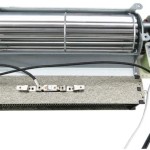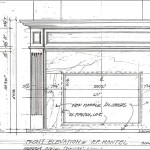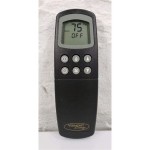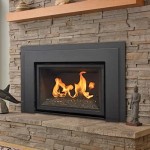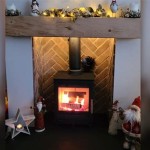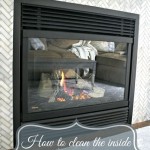Corner Fireplace Screen: A Comprehensive Guide
A corner fireplace screen is a protective barrier designed to enclose a fireplace situated in the corner of a room. It serves multiple functions, including preventing sparks and embers from escaping, protecting children and pets from the open flames, and enhancing the fireplace's aesthetic appeal. The design of corner fireplace screens often features angled panels to conform to the shape of the corner where the fireplace is located.
Fireplaces, while offering warmth and ambiance, inherently pose certain safety risks. The open flame can easily ignite nearby combustible materials, and hot embers can cause burns or start fires if they escape the firebox. A well-chosen fireplace screen mitigates these risks by providing a physical barrier that contains the fire and prevents debris from spreading. Corner fireplaces, with their unique placement, require specialized screens to effectively provide this protection.
The selection of a corner fireplace screen necessitates careful consideration of several factors, including size, material, style, and safety features. A screen that is too small may not adequately contain sparks, while one that is too large may detract from the fireplace's visual appeal. The material of the screen should be durable and heat-resistant, and the style should complement the overall decor of the room. Additionally, safety features such as secure latches and sturdy construction are essential, especially in households with children or pets.
Key Considerations When Choosing a Corner Fireplace Screen
Selecting the appropriate corner fireplace screen requires a thorough assessment of the fireplace's dimensions and the surrounding environment. Several factors must be considered to ensure both functionality and aesthetic compatibility.
1. Measurement and Fit: Accurate measurement of the fireplace opening is paramount. The screen should extend beyond the opening on all sides to effectively contain sparks and embers. Specifically for corner fireplaces, measuring the angle of the corner and ensuring the screen's panels conform to this angle is crucial. A screen that does not fit properly will leave gaps through which sparks can escape, thereby defeating its primary purpose. Consider the depth of the fireplace as well, ensuring the screen doesn't jut out excessively into the room. Measure the height, width of each side (up to where they meet at the corner), and the depth of the firebox. These measurements will help determine the appropriate dimensions for the corner fireplace screen.
Furthermore, consider the hearth's size and shape. The screen's base should sit securely on the hearth without wobbling or creating tripping hazards. If the hearth has an unusual shape, a custom-made screen may be necessary to ensure a proper fit. A snug fit along the hearth also prevents small objects, such as toys, from accidentally rolling underneath the screen and potentially catching fire.
2. Material and Construction: The material used in the construction of a corner fireplace screen significantly impacts its durability, heat resistance, and overall aesthetic. Common materials include steel, iron, and brass. Steel offers a good balance of strength and affordability, while iron provides a more traditional and robust appearance. Brass, often used for decorative accents, adds a touch of elegance but may not be as durable as steel or iron.
The gauge of the metal mesh is another critical factor. A finer mesh will provide better protection against sparks, while a coarser mesh may offer better airflow. Consider the specific needs of the fireplace and the type of fuel being burned when selecting the mesh size. For wood-burning fireplaces, a finer mesh is generally recommended due to the higher likelihood of sparks and embers.
The construction of the screen should be robust and stable. Look for screens with welded joints rather than simply bolted connections. Welded joints provide greater strength and durability, ensuring the screen will withstand the heat and occasional bumps and knocks. The legs of the screen should be securely attached and provide a stable base to prevent tipping.
3. Style and Aesthetics: A corner fireplace screen should not only be functional but also complement the overall decor of the room. Fireplace screens are available in a wide variety of styles, ranging from traditional to contemporary. Consider the existing architectural features of the room and choose a screen that harmonizes with the overall design.
Traditional fireplace screens often feature ornate details, such as scrollwork, floral motifs, and antique finishes. These screens are well-suited for homes with a more formal or classic aesthetic. Contemporary screens, on the other hand, tend to be more minimalist in design, with clean lines and simple geometric shapes. These screens are ideal for modern or contemporary homes.
The finish of the screen is another important consideration. Common finishes include black, bronze, and silver. Black finishes are versatile and can complement a wide range of decor styles. Bronze finishes add warmth and richness, while silver finishes provide a sleek and modern look. The choice of finish should be based on personal preference and the overall color scheme of the room.
Safety Features to Prioritize
Safety is the paramount concern when selecting a corner fireplace screen. Certain features can significantly enhance the screen's ability to protect against fire hazards and prevent accidents.
1. Secure Latches and Doors: Many corner fireplace screens feature doors that allow easy access to the firebox for adding wood or tending to the fire. These doors should be equipped with secure latches that prevent accidental opening. The latches should be easy to operate for adults but difficult for children to manipulate. Magnetic latches are a popular option, as they provide a strong and reliable closure.
The hinges on the doors should be sturdy and durable, capable of withstanding repeated opening and closing. Look for hinges that are made of high-quality metal and are securely attached to the frame and door. Loose or damaged hinges can compromise the integrity of the screen and increase the risk of accidental opening.
2. Child and Pet Safety: In households with young children or pets, additional safety measures are necessary. Consider a screen with a fine mesh that prevents small hands or paws from reaching through to the fire. The mesh should be securely attached to the frame and free of any sharp edges or loose wires.
Some screens also feature handles or knobs that are designed to stay cool to the touch, even when the fire is burning. These handles prevent burns and provide a safe way to open and close the doors. Position the screen far enough away from the fireplace opening to prevent pets or children from accidentally touching the hot firebox or embers that may fall out.
3. Stability and Tip-Over Resistance: A stable and tip-resistant screen is essential to prevent accidents. The screen should have a wide base and sturdy legs that provide a solid foundation. If the screen is lightweight, consider anchoring it to the wall or hearth to prevent it from being easily knocked over. Some screens come with anchors that can be attached to the wall, providing added stability. Regularly check the screen for any signs of instability and make any necessary adjustments or repairs.
Maintenance and Care of Corner Fireplace Screens
Proper maintenance and care will extend the lifespan of a corner fireplace screen and ensure it continues to provide effective protection. Regular cleaning and inspection are essential for maintaining its functionality and appearance.
1. Regular Cleaning: Over time, fireplace screens can accumulate soot, ash, and dust. Regular cleaning is necessary to remove these deposits and maintain the screen's appearance. Use a soft brush or vacuum cleaner attachment to remove loose debris. For more stubborn stains, use a mild detergent and water solution. Apply the solution with a soft cloth and gently scrub the screen. Rinse thoroughly with clean water and allow the screen to air dry completely before placing it back in front of the fireplace.
2. Inspection and Repair: Regularly inspect the screen for any signs of damage, such as rust, corrosion, or loose mesh. Repair any damage promptly to prevent it from worsening. Rust can be removed with a wire brush and treated with a rust-inhibiting paint. Loose mesh can be reattached using wire or metal fasteners. If the damage is extensive, consider replacing the screen to ensure continued safety.
3. Storage During Off-Season: During the warmer months when the fireplace is not in use, it is advisable to store the screen in a dry and protected location. This will prevent rust and corrosion and prolong its lifespan. Before storing the screen, clean it thoroughly and allow it to dry completely. Cover the screen with a cloth or plastic sheet to protect it from dust and dirt. Store the screen in a garage, shed, or other dry storage area.
Corner fireplace screens provide essential safety and aesthetic benefits. By carefully considering the factors outlined above, homeowners can select a screen that meets their specific needs and enhances the enjoyment of their fireplace while mitigating potential risks.

Corner Firescreen Two Panel Free Standing Custom Made To Fit Your Fireplace Hand Forged Wrought Iron Simplistic By Vintin Item F 229
Free Standing Gallery

Black Corner Recessed Screen With Valance

Brandner Design The L Shaped Fireplace Screen

Huntress Corner Fireplace Glass Door For Prefab Fireplaces

L Shaped Fireplace Screen We Could Use One Of These Drawing Faux Custom Metal Art

Corner Fireplace Traditional Living Room San Diego By Ams Inc Houzz Ie

Brandner Design The L Shaped Fireplace Screen

92 L Shape Screen Fireplace Screens Fire Brass Firescreens Black Firescreen Chrome Single Panel Antique Firepalce Mesh Doors At Wilshirefireplace Com

Perpetua Iron Firescreens
Related Posts


